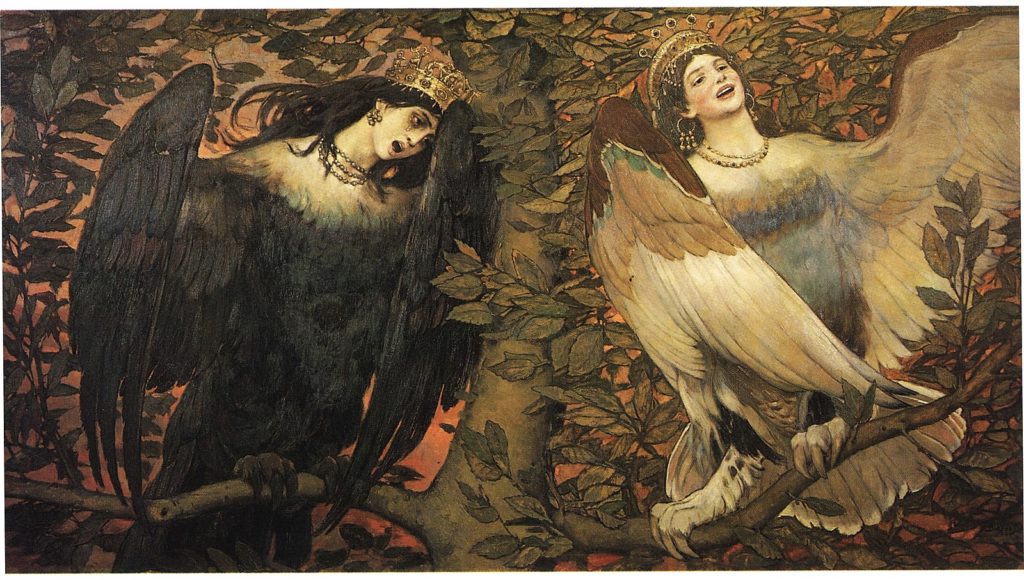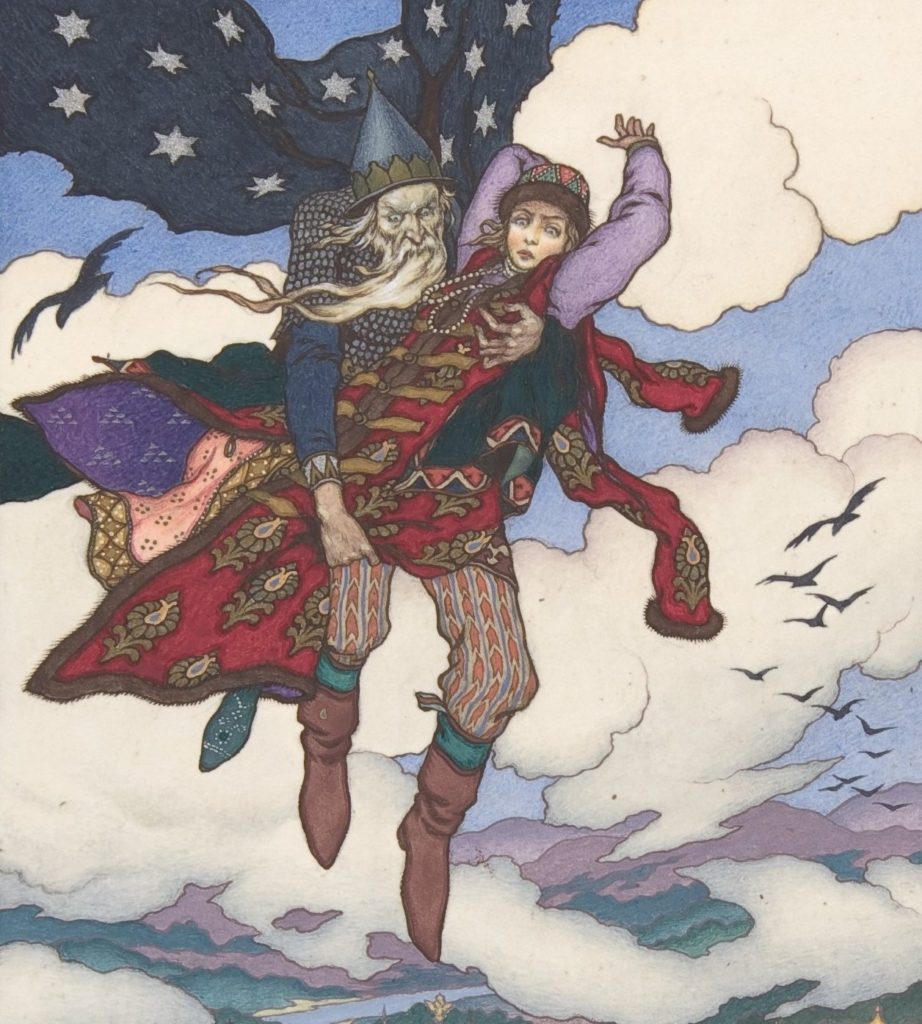
Greek mythology has deeply impacted various cultures around the world, and its roots can surprisingly be seen in Slavic folklore and fairytales.
Ancient heroes found their reflection in legends and fairy tales, and dangerous swamps and dense forests of Eastern Europe inspired many stories about mythical creatures and spirits.
The Slavic mythological tradition is closely woven into the general mythological pattern. One of the strongest influences on its development was provided by ancient Greek myths, the echoes of which are clearly visible in many legends, epics, and fairy tales of the Slavs.
Firebird, Slavic Image of the Phoenix
The firebird is a creature of slavic #Folklore and fairytales. Often a hero has to find one of its lost feathers or catch the fiery glowing bird alive as in the Russian #fairytale "The Firebird and Princess Vasilisa". Locking it up can bless or doom the captor. #FairyTaleTuesday pic.twitter.com/tZhdht7rKY
— Arbeitskreis für Vergleichende Mythologie e.V. (@LE_Mythologie) May 7, 2019
The so-called Zar Ptitsa, which refers to a Firebird, is a magnificent creature that is extremely popular in the Slavic epic. It represents a symbol of good luck and at the same time a harbinger of imminent death. In many fairy tales, brave heroes hunt for a feather from its tail, overcoming many dangers on their way. In Slavic folklore, it is believed that possession of the feather of this bird promises untold wealth, success, and luck.
This Slavic tradition has obvious references to the Ancient Greek legend of the Phoenix. Herodotus recorded a legend about this wonderful bird, similar in appearance to an eagle, with red-gold feathers. This ancient story has it that the Phoenix rose into the heavens, sang a funeral song, and, burning in a solar flame, was reborn from ashes once again.
Like the Phoenix, the Firebird flew, enveloped in fire, and illuminated everything around it, remaining immortal.
Baba Yaga
" Баба Яга." (1919 ) – Виктор Васнецов pic.twitter.com/9bIvYuuLj3
— Надежда Садовская (@nssadovskaya) July 1, 2023
This is the most recognizable figure in Slavic mythology and folklore. In fairy tales, she looks like an evil old woman who lives in the wilderness of a dense forest. She is hunchbacked, has a hooked nose, and one leg is made of bone.
In fairy tales, she flew on a magic mortar and abducted and held stray travelers the likes of the Greek nymph Calypso, who, according to Homer, kept Odysseus on her island for seven years.
The house of Baba Yaga is traditionally depicted as a wooden hut on a platform with chicken legs and fenced with a frightening fence of bones and human skulls. At the same time, the ancient Slavs buried their dead not in the ground but rather in special houses located on high stumps. Therefore, some scientists have come to the conclusion that Baba Yaga symbolizes the world of the dead, being its guardian. Her house, which is said to stand in a dense forest, symbolizes the border of two worlds, namely the living and the dead.
Certain studies imply a clear analogy with ancient Greek myths. Baba Yaga guards the entrance to the underworld and acts as an intermediary between the living and dead quite like the Greek Charon.
Sirin and Alkonost
Sirin and Alkonost pic.twitter.com/wacsNUbTfO
— Eären✵ (@Mehrful) October 26, 2022
Another magical creature of Slavic folklore has been adopted from ancient Greek myths. Sirin and Alkonost are considered sisters with the bodies of birds and female heads. Their appearance is almost indistinguishable from Greek sirens and harpies.
Sirin legends tell of a sweet song of this creature. Supposedly, a person forgot about everything and followed the voice of a sirin until the individual fell dead as a result of fatigue. Old canvases often depict a man who first listened to Sirin’s enchanting song and then was portrayed as dead. This is an obvious parallel of Sirin with the ancient Greek sirens, who lured sailors with their songs, causing them to crash against the rocks.
As for Alkonost, this image came to Slavic folklore from a Greek myth about lovers the Alcyone and Ceyx. Legend has it that they dared to call themselves Zeus and Hera. The gods felt offended and struck down lightning on Ceyx’s ship. Alcyone’s grief was so great that she threw herself into the sea, and the gods, touched by what had happened, turned them both into birds.
In a later Slavic folklore, it was believed that Alkonost rules the daytime and comes with joy, while Sirin rules the night, bringing grief and sadness.
Koschei the Deathless

The male prototype of the dark god among the Slavs is Koschei the Deathless, a powerful and invincible being. He looks like a thin and even bony tall old man with a stern face and has the ability to control dead souls and transform into any human or animal.
Once in the kingdom of Koshchei, a person did not have a single chance to escape alive. In this context, this Slavic character has become almost analogous with the Greek Hades, ruler of the underworld.
In addition, the invincible Koschei, much like Achilles, had his own obscure weak point that could destroy him. His death was in the well-hidden egg. In Orthodox beliefs, the egg represents something more, namely the essence of the universe, the energy that gives life to Koshchei. Having lost it, he is doomed to death.
Vasilisa the Beautiful
иллюстрация к сказке "Василиса Прекрасная", Иван Яковлевич Билибин, 1900 pic.twitter.com/x4g5TmkO2u
— графомания и кот (@toubabokooomi) December 25, 2021
Vasilisa the Beautiful, one of the favorite heroines of Slavic fairy tales, appears as a young girl of unprecedented beauty, for whose hand and heart the heroes fight. Her other names are Vasilisa the Wise or Elena the Beautiful.
Even the name of this character goes back to ancient legends. In Greek mythology, Helen was the wife of the Spartan King Menelaus. It is believed that the abduction of Helen by the Trojan Paris was the cause of the Trojan War.
These motives came to the Slavs after the adoption of Christianity. They were passed from mouth to mouth, providing the basis for a number of fairy tales. In folklore, Elena the Beautiful is usually a passive character, often granted as a reward to the hero along with the throne, gold, and ample public recognition.
See all the latest news from Greece and the world at Greekreporter.com. Contact our newsroom to report an update or send your story, photos and videos. Follow GR on Google News and subscribe here to our daily email!



